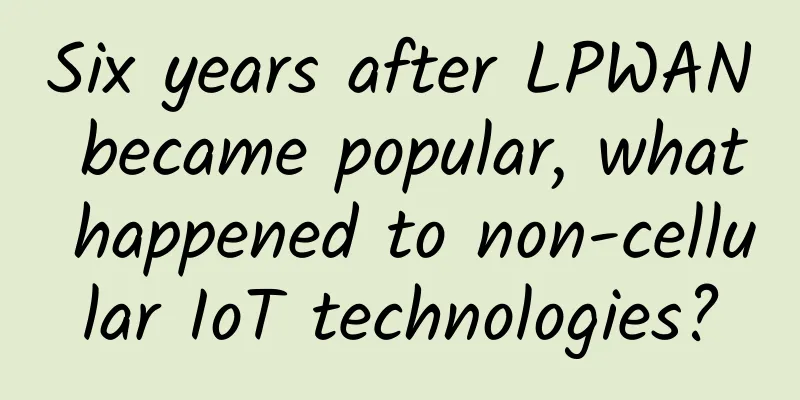Industrial IoT challenges are daunting, and seven test platforms are particularly important

|
Smart factories, smart processes, smart grids, smart transportation systems, etc. are becoming increasingly popular, and companies are moving from proof of concept (POC) to large-scale deployment. Although these technologies are expected to improve productivity and profits, promote product development, and enhance the safety of public spaces, the highly connected digital world has security concerns. According to IoT Evolution, Stephen Mellor, technical officer of the Industrial Internet of Things Consortium (IIC), pointed out that the Industrial Internet of Things (IIoT) will face four major challenges: the first is security concerns. For example, if a chemical plant is attacked by hackers, the consequences will be serious, so a comprehensive security architecture must be established. The second is connectivity. The Industrial Internet of Things not only connects new-generation factories, but also connects decades-old equipment, so the problem of inconsistent standards and protocols must be solved. The third is data analysis. Algorithms must be properly trained to produce accurate and useful data analysis results with the help of machine learning technology. The fourth is to establish a reference framework. Organizations such as IIC must work closely together.
Dr. Richard Soley of the IIC noted that the IIC testbeds help identify new technologies and opportunities to solve key problems, and several of them are particularly important. The first is the Track&Trace Testbed, which was initially designed to track process tools and later expanded to logistics equipment, especially forklifts. The second is the Time-Sensitive Network Testbed (TSN Testbed). TSN provides more critical functions for the network, such as time synchronization, which helps to schedule traffic and manage central automation system configuration. This testbed applies TSN technology to manufacturing systems. The third is a manufacturing quality management testing platform that uses modern sensing networks and data analysis technologies to assist factory transformation and thereby improve manufacturing quality. Fourth, the microgrid application communication control test platform. The microgrid integrates power generation and storage to make renewable energy power generation more stable. In the short term, it is limited to campuses, enterprises, hospitals, factories and other places, but will have more extensive applications in the future. The fifth is the INFINITE test platform, which uses software-defined networking (SDN) to create virtual domains, allowing multiple virtual domains to operate securely on a single physical network. Sixth, the condition monitoring and predictive maintenance test platform can grasp the status of major assets, automatically predict equipment failures with advanced sensors, and notify the responsible personnel or systems, so as to take preventive measures to avoid damage to equipment or unexpected downtime. The seventh is the smart factory network testing platform, which is designed to coordinate the production capacity of the manufacturing site to meet customer needs. |
<<: Building the nervous system of smart cities | Huawei shines at the 19th CHTF
>>: The three-layer switch you know works like this
Recommend
Network equipment and protocols: protocols
When visiting a website and sending or receiving ...
The preliminary round of the 10th "H3C Cup" National College Students Digital Technology Competition 2020 was successfully concluded
[51CTO.com original article] On November 14, 2020...
iWebFusion: US servers start at $49/month, 10Gbps bandwidth servers start at $149/month, Los Angeles 4G memory VPS monthly payment starts at $9.38
iWebFusion is a foreign hosting company founded i...
What does the TTL value returned by the Ping command mean and what does it do?
The ping command is used to test the connection t...
NASA is upgrading the Deep Space Network to help advance future space exploration
According to foreign media reports, NASA is upgra...
[Black Friday] HawkHost virtual hosts up to 30% off, reseller hosts up to 50% off, cloud servers up to 30% off
HawkHost's Black Friday promotion starts at 1...
What are LPWAN technologies?
As the Internet of Things (IoT) continues to grow...
Ranking of JavaScript open source projects in September
[[428048]] The ranking of the most popular JavaSc...
Hosteons Salt Lake City AMD Ryzen Series Promotion $3/month-1GB/20G NVMe/4TB@10Gbps Bandwidth
Hosteons is currently promoting the Salt Lake Cit...
How to deal with the impact of digital transformation on the network?
Digital transformation has increased the importan...
Five IoT trends that we need to pay attention to in 2018!
The Internet of Things has become a globally reco...
Ruijie worked hard for three days and three nights to help build the network of Xi'an Fangcang Hospital
Xi'an, a world-renowned ancient capital and c...
Understanding HTTP and TCP protocols from an HTTP request
[[347384]] From an HTTP request to see the princi...
Linux will support new network technology based on Li-Fi
According to phoronix, Li-Fi technology supplier ...
Five-minute technical talk | Semantic communication technology helps build a safe countryside
Part 01 Semantic Communication Technology The rap...









